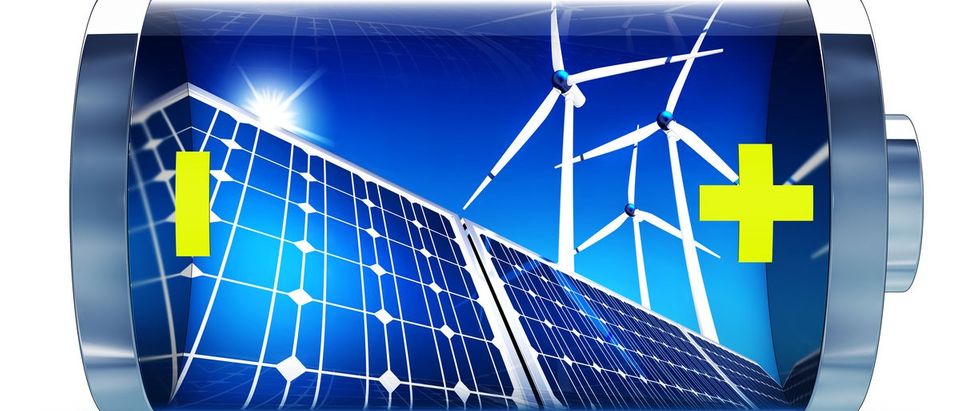Batteries don’t work well enough to support solar power in a cost effective manner, according to research published Monday by Belgian scientists from the Université libre de Bruxelles.
The scientists analyzed data from local energy suppliers, ran it through computer simulations and found it isn’t possible for homes to generate most of their own electricity from solar power and store it in batteries. Researchers determined that the batteries’ short lifetime and high prices — as well as fundamental problems — will likely prevent solar power from ever being viable without lucrative financial incentives from the government.
“Photovoltaic [solar power] systems coupled with lead-acid batteries do not ensure electrical self-sufficiency for a residence at a reasonable cost,” states the study’s press release. “The problem starts with the bad timing of solar energy and energy consumption: while the sun shines at its maximum around midday, most homes consume the most in the morning and in the evening. Add to that the fact that in many countries most of the solar energy is available in the summer months and you’re set for dark times.”
This is not the first research to conclude solar power doesn’t work without batteries that don’t exist — scientists from the University of East Anglia reached a similar conclusion in May.
Other researchers found as the amount of green energy entering national power grids increases, the negative impacts of wind and solar’s volatility will also increase unless better batteries are developed. Additionally, scientists suspect that it may be physically impossible to build those better batteries.
The research highlights the fact that it is currently impossible to economically store power for times when the sun isn’t shining and the wind isn’t blowing. Purchasing enough batteries to provide just three days of storage for an average American household costs about $15,000, and those batteries only lasts for about five years and are very difficult to recycle.
In order for the power grid to function without large-scale energy storage, demand for energy must exactly match supply. Power demand is relatively predictable and conventional power plans, like nuclear plants and natural gas, can adjust output accordingly.
Solar and wind power, however, cannot easily adjust output. They also provide power unpredictably relative to conventional power sources.
On an especially cloudy or windless day, the electrical grid can’t supply enough power from solar or wind alone. Wind and solar also run the risk of producing too much power, which can overload and fry the power grid. This is why electrical companies will occasionally pay consumers to take electricity. Germany paid wind farms $548 million to switch off last year to avoid grid damage.
This is true for home power storage as well, even with the latest batteries, which were invented to make rooftop solar panels and wind turbines economically viable for consumers. A Tesla Powerwall capable of powering a home costs $7,340 to buy.
A conservative analysis estimates a Powerwall can save its owner a maximum of $1.06 a day. An Elon Musk Tesla Powerwall battery would take almost 40 years, or roughly four times its warranty period, to pay for itself, according to analysis performed by the Institute for Energy Research. Tesla only offers five to 10 year warranties on its Powerwalls, and predicts they will last for only 15 years.
One of the world’s largest and most powerful batteries, located in Fairbanks, Alaska, weighs 1,300-metric tons and is larger than a football field. It can only provide enough electricity for about 12,000 residents, or 38 percent of Fairbanks’ population, for seven minutes. That’s useful for short outages, which happen a lot in Alaska, but isn’t effective enough to act as a reserve for solar and wind.
Currently, the best way humans have of “storing” power is pumping water up a hill, which actually accounts for 99 percent of all global energy storage.
Send tips to andrew@
All content created by the Daily Caller News Foundation, an independent and nonpartisan newswire service, is available without charge to any legitimate news publisher that can provide a large audience. All republished articles must include our logo, our reporter’s byline and their DCNF affiliation. For any questions about our guidelines or partnering with us, please contact licensing@dailycallernewsfoundation.org.


